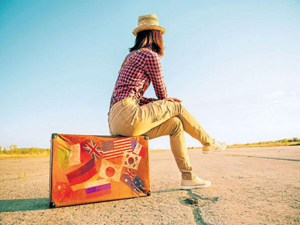Washington, May 3: You may soon be wearing clothes made of paper that can protect you from dangerous bacteria, thanks to researchers who have invented an inexpensive and effective way to sanitise surfaces.
 "Paper is an ancient material, but it has unique attributes for new, high-tech applications," said Aaron Mazzeo, an assistant professor at Rutgers University in the US.
"Paper is an ancient material, but it has unique attributes for new, high-tech applications," said Aaron Mazzeo, an assistant professor at Rutgers University in the US.
"We found that by applying high voltage to stacked sheets of metallised paper, we were able to generate plasma, which is a combination of heat, ultraviolet radiation and ozone that kill microbes," said Mazzeo. In the future, paper-based sanitisers may be suitable for clothing that sterilises itself, devices that sanitise laboratory equipment and smart bandages to heal wounds, among other uses, researchers said.
The invention consists of paper with thin layers of aluminium and hexagon/honeycomb patterns that serve as electrodes to produce the plasma, or ionised gas.
The fibrous and porous nature of the paper allows gas to permeate it, fuelling the plasma and facilitating cooling.
"To our knowledge, we are the first to use paper as a base to generate plasma," said Jingjin Xie, lead author of the study published in the journal Proceedings of the National Academy of Sciences. In experiments, the paper-based sanitisers killed more than 99 per cent of Saccharomyces cerevisiae (a yeast species) and more than 99.9 per cent of E coli bacteria cells.
Most E coli bacteria are harmless and are an important part of a healthy human intestinal tract. However, some types of E coli can cause diarrhoea, urinary tract infections, pneumonia and other illnesses, according to the US Centres for Disease Control and Prevention.
"Preliminary results showed that our sanitisers can kill spores from bacteria, which are hard to kill using conventional sterilisation methods," said Qiang Chen, doctoral candidate at Rutgers.
Mazzeo said one of the goals of their ongoing research is to make sensors that resemble how human and animal skin provides protection from external microbes and bacteria, while detecting input (touch, force, temperature and moisture) from environmental surroundings.
Such sensors might cover parts of prosthetics, buildings or vehicles, researchers said.
It also might be possible to sterilise vehicles, robots or devices before they enter contamination-prone environments and when they come out to keep them from contaminating people and clean environments, they said.





Comments
Add new comment